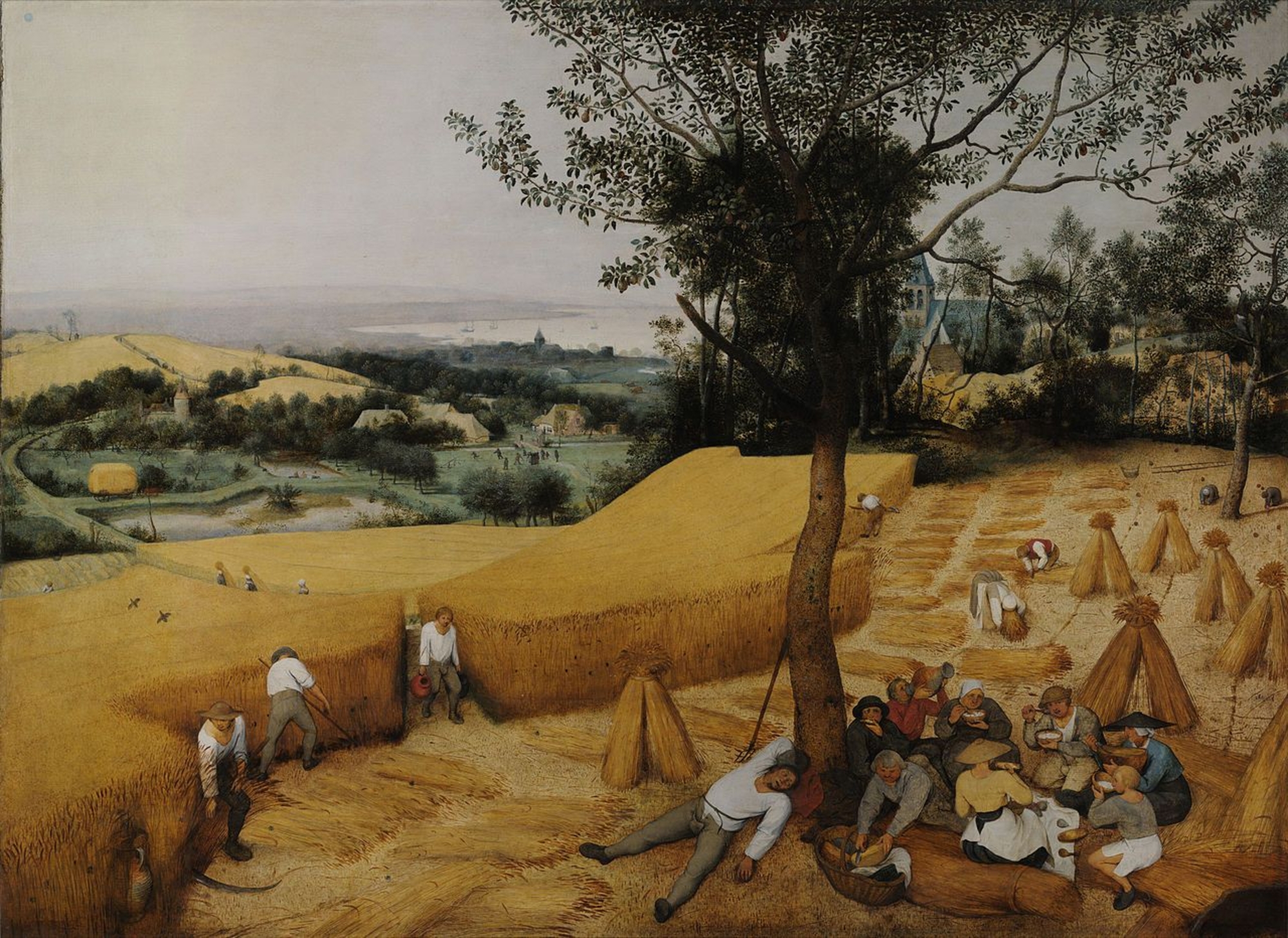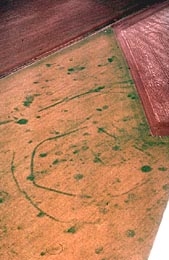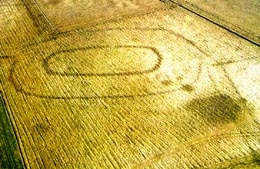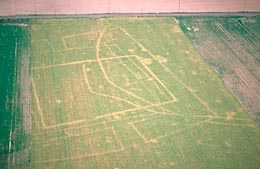- Home
- Discoveries
- Gallic settlements
- The aedeficia
- Different types of nested enclosures
The grain emerging from the ground reveals a part of the nested enclosures and a great many pits, both inside and outside them. Capelle-Fermont (Pas-de-Calais).
There are three main types of native farms:
- TYPE A consists of irregular, mostly curved groupings. Vaguely oval-shaped forms may be seen, but these are rarely perfectly oval like at Drucat (Somme). Their funnel-shaped entrances are fairly characteristic, but not omnipresent.
This type is generally associated with a large number of pits, such as at Capelle-Fermont (Pas-de-Calais).
- TYPE B is much more common.
It consists of two enclosures that are very different in shape: an internal closure (I), which is regular in shape with straight sides, and is generally rather compact. The second enclosure (II) is irregular, with a curved outline, and is most often very large. There are several examples of this. Sometimes the internal partitions are observable.
The dew has perfectly revealed the oval-shaped, double nested enclosures of a native farm, with its access road and a large filled-in pit.
fosse comblée. Drucat (Somme).
In several cases, Gallo-Roman foundations can be discerned in a type I enclosure. We can also find identical systems of type II nested enclosures surrounding certain small Gallo-Roman villas. The two photographs of Blangy-Tronville (Somme) in the photo gallery on the next page are good illustrations of the need for a number of flyovers, as well as the caution that must be exercised when interpreting based on a single aerial view.
Just because a Gallo-Roman foundation does not appear in the photo doesn't mean that it doesn't exist! This is also indicative of the similarities that exist between a native farm and a Gallo-Roman villa; probably the one gave way to the other.
An excellent example of a native farm in which the interior enclosure is perfectly straight-sided, and which is included in a large, irregular system of ditches. Tailly-l'Arbre-à-Mouches (Somme).
TYPE C consists of nested enclosures, all more or less straight-sided, whose ditches are visibly parallel. At the entrances, they stop and interconnect; this results in the very typical en touche de palmer. openings. They can be seen around small villas (such as at Ponthoile). In nearly all cases, large and complex systems of multiple enclosures, associated with many pits, are Gallic or Gallo-Roman farms.
First seen in Picardy, today hundreds of these native farms are known throughout France. Many have been excavated in recent years. These digs have confirmed the existence of isolated Gallic farms (or in the Gallic tradition), built of wood and earth. Their mixed use (both agriculture and livestock farming) also included various craft activities, sometimes quite specialized, including metalworking, ceramics, spinning, etc. At Pont-Remy (Somme), large-scale soil removal followed by meticulous excavations, led by Gilles Prilaux, revealed a vast Gallic farm with interlocking enclosures, frequently repaired and sometimes reorganized into slightly different layouts. In addition to a habitation zone, this Gallic farm included a burial area and a salt workshop equipped with a large kiln, allowing it to produce batches of between 300 and 500 kilos each (or an annual production of several tons, which is all the more remarkable as it was located twenty kilometers from the sea!). All of the buildings were made of wood and earth, without stone foundations, even when they lasted into the Roman era, i.e. until the first century CE.
Type C native farm with many nested enclosures and entrances en touche de palmer. Ponthoile (Somme).
Large type C native farm with many nested enclosures, probably reorganized several times, and likely at a later date (Roman era). Bacouël (Somme).
In the field which has just been plowed, we distinguish the enclosure which surrounded the partially visible Gallo-Roman villa. Aubigny (Somme).






